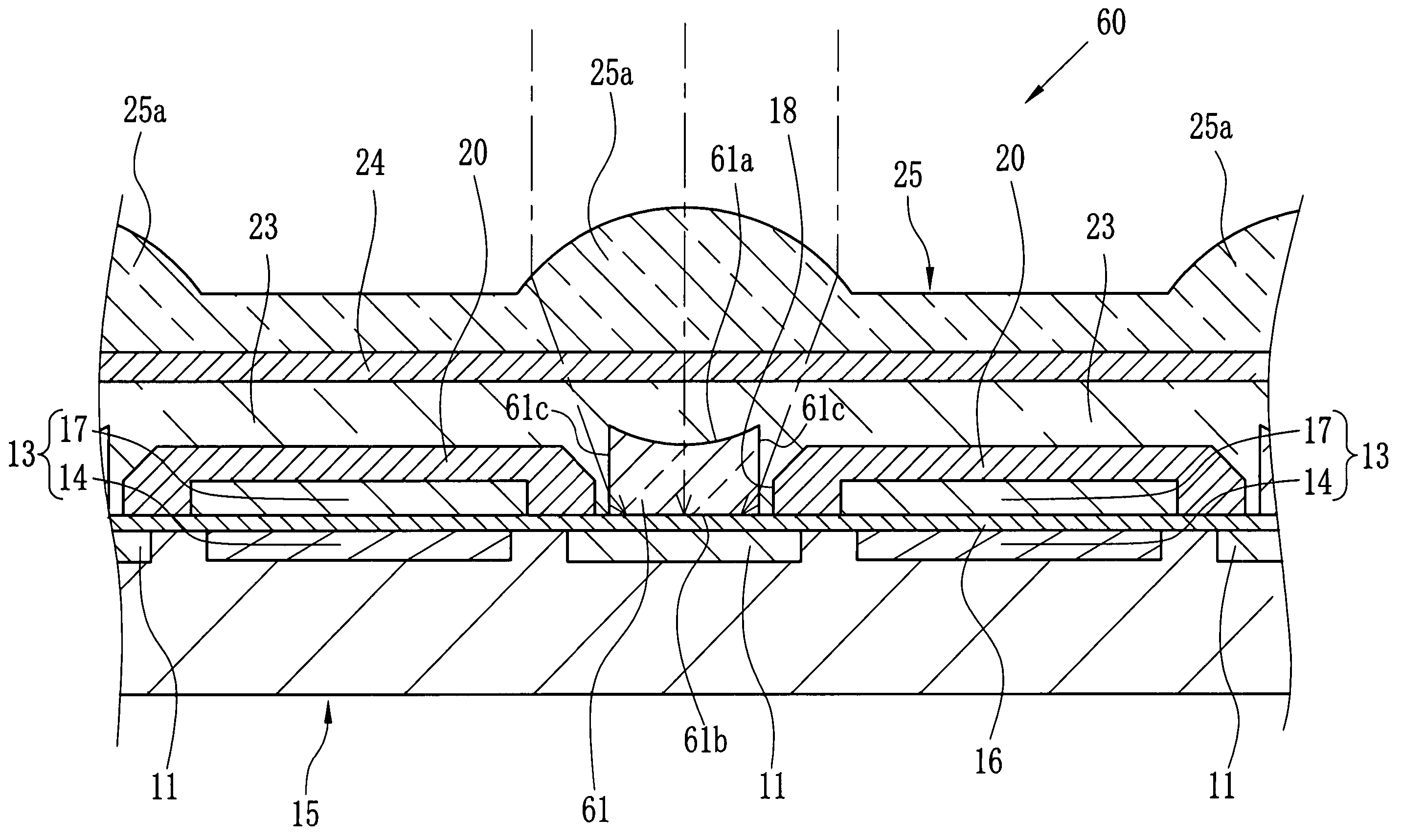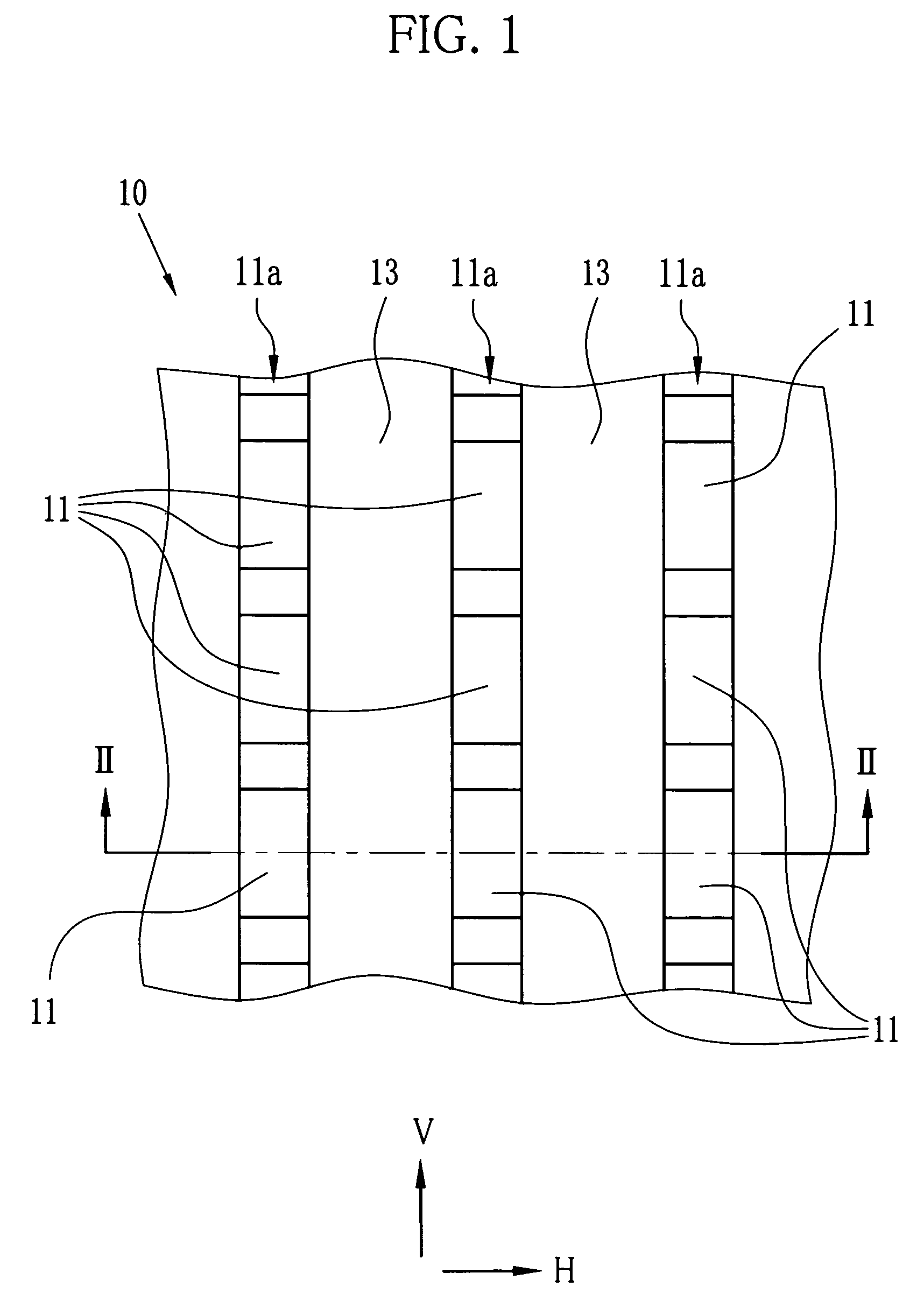Solid state imaging device including a converging structure
a technology of converging structure and imaging device, which is applied in the direction of radio frequency controlled devices, instruments, television systems, etc., can solve the problems of hardly putting all the microlenses into exactly the same shape, and the size of solid state imaging devices is even smaller, so as to improve the efficiency of focusing light, prevent light from permeating the transfer electrode, and improve the refractive index
- Summary
- Abstract
- Description
- Claims
- Application Information
AI Technical Summary
Benefits of technology
Problems solved by technology
Method used
Image
Examples
Embodiment Construction
[0021]Referring to FIG. 1, a solid state imaging device such as, for example, a CCD 10 has a plurality of photodiode arrays 11a that extend in a vertical transfer direction V. Each photodiode array 11a includes a plurality of photodiodes (light receiving elements) 11 arranged at regular intervals. Formed next to the photodiode arrays 11a are vertical transfer paths 13 that also extend in the vertical transfer direction V. It is to be noted that an upper structure, such as a light shielding layer, is not illustrated in FIG. 1.
[0022]As shown in FIG. 2, the CCD 10 has a semiconductor substrate 15 on which the photodiode arrays 11a and charge transfer sections 14 are formed one after the other in a horizontal transfer direction H (see, FIG. 1). Above the charge transfer sections 14 across an insulating layer 16, transfer electrodes 17 are formed. The charge transfer section 14 and the transfer electrode 17 constitute the vertical transfer path 13 shown in FIG. 1, and vertically transfer...
PUM
 Login to View More
Login to View More Abstract
Description
Claims
Application Information
 Login to View More
Login to View More - R&D
- Intellectual Property
- Life Sciences
- Materials
- Tech Scout
- Unparalleled Data Quality
- Higher Quality Content
- 60% Fewer Hallucinations
Browse by: Latest US Patents, China's latest patents, Technical Efficacy Thesaurus, Application Domain, Technology Topic, Popular Technical Reports.
© 2025 PatSnap. All rights reserved.Legal|Privacy policy|Modern Slavery Act Transparency Statement|Sitemap|About US| Contact US: help@patsnap.com



